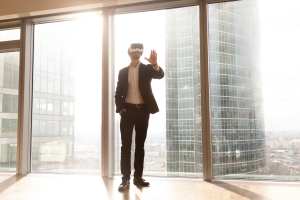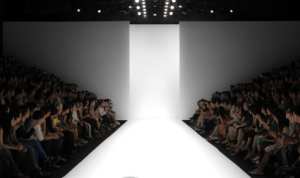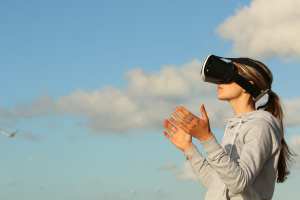
For a long time, virtual reality (VR) has been touted as the next big thing but hasn’t quite made the cut.
In the 1970s and ’80s, there were unconvincing vector graphics and underwhelming displays. In the ’90s we saw bulky headsets and lagging visuals that pulled users out of the experience.
The tech never seemed to live up to the hype and promise of VR – until now.
VR is Finally Getting Its Big Break
With new breakthroughs in motion tracking and display technologies, coupled with computing power that can handle the rendering, this round of VR is much more than just a fad.
Companies like Oculus, Valve, PlayStation, and HTC are delivering immersive and memorable experiences that are finally convincing consumers and companies to take the tech seriously, and it is starting to break through to the mainstream.
The number of active VR users more than doubled from 2016 to 2017, and were expected to jump another 90% in 2018. Click To TweetAdoption is increasing yearly – Statista predicted that 2018 would see more than 170 million active VR users worldwide, compared to 90 million in 2017 and 43 million in 2016.
Industries have taken notice, and they have begun to take advantage of VR’s unique immersive qualities in interesting and unique ways.
Here are ten industries where VR is making a large impact today, and will continue to do so in the future.
Insurance
With VR’s ability to create new interactive environments, it can be an invaluable educational tool.

Farmers Insurance has realized this potential, and created an innovative VR training program for their new hires. Traditionally, new employees would be sent to a training house built especially for the insurance company. Due to the physical limitation of an actual building, it would always be damaged in the same way, and trainees would all have the same experience, despite the many nuances they would face in the field.
With Farmers’ new VR program, they are able to train people on six different floor plans, and more than 500 different damage scenarios. This allows them to more accurately prepare their trainees for their new job.
Insurance companies can use VR to offer acutely specialized training to their employees’ depending on their assignments. For example, agents who deal exclusively with auto claims can take a VR training course that specifically teaches them about their sector. They can learn about the intricacies of auto repair, or the subtle differences between different models from year to year, etc.
In the future, companies will be able to offer simulations and experiences to their customers that could improve their safety habits and decrease claims.
Additionally, insurance companies could cut down the cost of sending people into the field by only sending one person with a 360-degree camera. Then, agents and experts could assess real damages without even leaving their desks.
More in insurance: see how Generali stays innovative
Healthcare
The healthcare industry has seen some of the most compelling uses for VR.
For one, rehab can be a painful but necessary process on the road to recovery, and patients often hate it. However, VR Health Group is one of many companies hoping to ease the pain.
Their goal is to create digital VR experiences that turn rehabilitation into a fun and compelling experience. These experiences will use the reward mechanics and playability of video games to engage patients and promote adherence to their specific routines.

Another potentially game-changing use of VR is in patient education. Making sure a patient understands a particular disease or procedure that they are facing is both difficult and time-consuming for healthcare providers.
Textbooks and pamphlets can only do so much, and as a result, Ghost Productions creates immersive VR animations that can help explain the complexity of a procedure to patients that they may otherwise not understand.
These are just the tip of the iceberg for healthcare potential in VR. Researchers are using interactive 3D models of a patient’s actual body part rendered from CT and MRI scans to give patients a more tangible idea of what needs to be treated. There is also the potential for VR to change the way surgeons perform intricate surgeries.
Finance
Imagine that instead of diving into data sheets and statistics, analysts could wade through interactive visual representations of financial information and trends. Data would become more easily digestible, and experts could make better and faster decisions based on split-second reviews of complex information.
This is precisely what companies like Salesforce and Fidelity investments are after. They currently use Oculus Rift VR headsets to create immersive 3D data representations that allow them to visualize the ebbs and flows of their investment portfolios. They can see changes in real time and make important decisions quickly, which before would have required much more analysis and interpretation.
Almost 75% of millennials consider tech companies as their main source for new financial offerings, not banks. Click To TweetVR also has the potential to help financial institutions appeal to the younger generations – an issue that is becoming increasingly urgent.

According to the Millennial Disruption Index, 73% of millennials consider tech companies like Google, Amazon, Apple, PayPal, or Square as their main source for new financial offerings. This means that their reliance on traditional banks is diminishing, and that could spell trouble for those institutions in the long-term.
By adopting exciting new VR experiences that change how people think of traditional banking, and modernize the entire process, banking institutions could convince millennials that they are worth another look.
More in finance: See how Bank of America stays innovative
Entertainment
The entertainment industry has been a key driver in this new VR revolution. If they are able to capture the public’s interest and grow VR to a point of mainstream acceptance, that could herald widespread VR adoption across every other industry.

For gaming, VR offers immersive 3D experiences that are changing the definition of what a video game can be. Users are often wowed by the physical and emotional response they have when VR is done right. High-end consumer headsets like the Oculus Rift, HTC Vive, and PSVR are competing alongside more affordable offerings like the Oculus Go, Gear VR, and Google Cardboard. Whatever your price point, there is a VR headset available for you.
Immersion is key, and new tech like the Vive Tracker can help programmers transform real world objects into virtual avatars. Say you bought a fancy new VR golf game, but you would rather use a real club than the Vive game controller. The developers could have you attach a Vive Tracker to a real golf club, allowing it to be recognized in the virtual world.
There are also a wide range of multimedia possibilities for VR outside of gaming. With VR, every living room or office could be transformed into a movie theater complete with stadium seating. This isn’t any ordinary theater, though, as you can watch the latest shows through your Netflix account, or scroll through your YouTube feed and watch them on the big screen.
The entertainment industry may be the key to VR adoption across every other industry. Click To TweetFashion
VR is driving new levels of accessibility to previously exclusive runway shows and fashion trends.
Fashion companies like Dior and Topshop have teamed up with Oculus to deliver unprecedented runway access. Topshop is allowing customers in their flagship shop in Oxford Circus the ability to experience their AW14 runway show in VR in true VIP fashion alongside celebrities like Kate Moss.

Dior has created their own VR headset that will be showcased in some of their stores, called Dior Eyes. It will give consumers a backstage experience that takes place before a major Dior show. Users will see models being made up by Peter Philipps, the Creative and Image Director of Dior Make-up.
In a similar vein, Tommy Hilfiger’s CEO sees virtual reality as a potential gateway to a new retail experience. Gear VR headsets have long been a fixture in Tommy Hilfiger stores, and they allow consumers who may have never seen a runway show live to have that experience through VR.
While VR is now a way for struggling brick and mortar retailers to offer new innovative experiences to consumers, in the future it could change the shopping experience altogether.
If shoppers are able to see a fashion show or retail line with a virtual headset, and those headsets become cheaper and more readily available for home use, 3D rendered virtual stores could mean a major shift for the retail market that demands innovation.
More in fashion: See how Ralph Lauren is changing its digital game
Hospitality
How many times have you booked a room in a hotel, only to be disappointed with the offerings when you arrive? The room looked bigger in the pictures, the view more spectacular, and the amenities more current.

With VR, some hotels and resorts are giving their customers the ability to take a virtual tour before they book. 3D photo-realistic environments can be explored around the property to give you an idea of exactly what you are getting for your money.
The future of VR in the hospitality industry lies in the virtual booking process. A survey of hoteliers and consumers by oracle.com shows that 52% of respondents believe that VR will be an integral part of hotel booking by the year 2025, and a majority believe that this will create a better experience.
Many hoteliers are also looking to VR to create unique experiences that draw in guests and help give them fill out their stay. VR entertainment will likely become ubiquitous in hotels and resorts over the next few years, essentially changing how we view in-room entertainment.
Fitness
For many people, going to the gym is a vital fitness ritual, but the experience can become boring and repetitive. For others, the gym can be a stressful experience that makes them feel self-conscious and embarrassed.
Luckily, VR can serve both parties.

For the fitness lover, VR can create new and exciting ways to change up your workout routine. Companies like VirZOOM and Holofit are crafting high-end professional machines with integrated VR capabilities that allow you to have more immersive experiences that borrow motivation and reward techniques from the gaming industry.
Exercisers get the benefit of an expensive piece of machinery that they would never buy for their home, along with a novel experience that can help them improve their daily regimen.
For the introvert who still wants to get in shape, but also doesn’t want to work out in front of a bunch of strangers, VR can offer new ways of getting fit at home. The potential for this market is enormous.
From 2007 to 2012, Nintendo sold more than 22 million copies of their fitness-minded motion control game Wii Fit. The company was able to use traditional reward-based mini games to encourage people to get up and move around.
In VR, the experiences can become so immersive that explicit exercise games are not even necessary. People are getting up and moving around almost instinctively in order to explore and compete in their new gaming world.
The market for this type of VR clearly exists, it is just a matter of connecting the idea of VR and exercise in the mind of the consumer.
Tourism
As mentioned earlier, the immersive nature of VR headsets creates immense potential for multimedia devices. This fact hasn’t gone unnoticed by the travel industry.
Airlines like Air France and Virgin Airlines are set to regularly offer VR headsets as a new way to experience in-flight entertainment. Skylights, the in-flight entertainment company that works with Air France and other airlines, has created their own lightweight VR headset that is designed specifically to be worn for long periods of time without discomfort – and they offer both 3D and 2D viewing experiences.

VR is also set to offer immersive vacation experiences without having to leave your house. While these experiences are not really intended to replace traditional vacations, they can offer brief excursions that can help to relieve stress while experiencing new cultures and places around the world.
What this implementation of VR tech offers is escapism, and when done right, it can also act as a compelling way to market new travel experiences. Getting a small taste of the canals in Venice or the Great Wall of China may be enough of a taste to drive users to experience the real thing.
More in tourism: See how KLM stays innovative
Automotive
VR is a great way to add value to a customer’s experience, and auto companies around the world are taking advantage of the tech’s novelty and immersive nature.
With VR, car companies have the ability to bring their unique car driving experience directly to you.

BMW uses VR as a way to experience detailed photo-realistic renderings of their cars. For instance, at the 2018 Consumer Electronics Show in Las Vegas, BMW debuted their new crossover SUV through an entirely virtual driving experience that allowed users to explore the interior of the car and take it out for a test drive. This same experience will soon be available at BMW dealers worldwide.
Ford, Mitsubishi and Infiniti are all making similar moves to offer VR driving and marketing experiences intended to capture more of the Gen Z and Millennial markets.
In addition, Toyota has developed a program for the Oculus Rift called TeenDrive365. This virtual driving program is intended to educate younger drivers about how to drive more safely without the inherent risk of taking them out to busy streets and intersections.
The same tech can also teach kids about the dangers of distracted driving, and how easy it can be to have a life-threatening accident because of distractions like texting or talking.
Marketing
Marketing with VR has great potential, and companies are eager to create compelling VR experiences that will sell their products.
Sometimes, a company can use VR to excite consumers and create an interesting and compelling experience, as happened with BMW’s aforementioned test drive. Other times, it can come across as a gimmicky piece of advertising that doesn’t offer much value to the consumer, as evidenced by film tie-in VR experiences like the Warcraft virtual reality trailer that failed to attract moviegoers to theater seats.

However, the potential clearly exists, and many are saying that VR will revolutionize the way products and services will be marketed.
For example, Lowe’s home improvement stores have begun using VR as a way to market their remodeling services. With their Holoroom program, they allow consumers to see interactive real-time renderings of their remodeling plans.
By helping consumers visualize the end result of their remodeling dreams, they create an experience that simultaneously manages customer expectations while also driving up their anticipation.
A VR headset in Every Living Room
While the idea of wide adoption of virtual reality may have seemed like science fiction — or even science fantasy — at one time, it is quickly becoming a reality.
VR is more accessible and affordable than ever, and with adoption rates going the way they are, the price should go down even further as companies like Oculus and HTC perfect the experience.
The tech still has its detractors, and some even claim that it is still just a fad, but industries are waking up to its immersive and compelling potential.
VR may still fall just short of being mainstream, but at this point, it is only a matter of time.